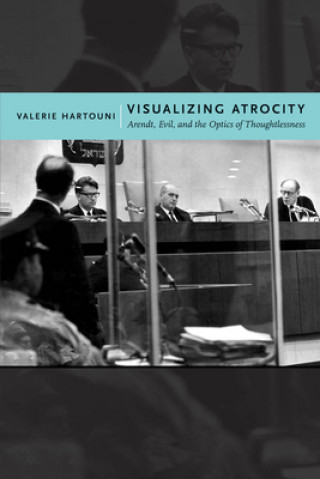
Doručenie
Nákupný poradca





Nehodí sa? Žiadny problém! U nás môžete do 30 dní vrátiť
 Darčekový poukaz
v ľubovoľnej hodnote
Darčekový poukaz
v ľubovoľnej hodnote
S darčekovým poukazom nešliapnete vedľa. Obdarovaný si za darčekový poukaz môže vybrať čokoľvek z našej ponuky.
Visualizing Atrocity
 Angličtina
Angličtina
 85 b
85 b
30 dní na vrátenie tovaru
Mohlo by vás tiež zaujímať


Taking Hannah Arendt's provocative and polarizing account of the 1961 trial of Nazi official Adolf Eichmann as its point of departure, Visualizing Atrocity reassesses the myths that have come to shape and limit our understanding of the Nazi genocide as well as totalitarianism's broader, constitutive, and recurrent features. These myths are inextricably tied to the atrocity imagery that emerged with the liberation of the concentration camps and played an especially important, evidentiary role in the post-war trials of perpetrators. At the 1945 Nuremberg Tribunal, particular practices of looking were first established, and later reinforced and institutionalized through Eichmann's trial in Jerusalem as simply part of the fabric of historical fact. These ways of seeing have come to constitute a certain visual rhetoric that drives contemporary mythmaking about how we know genocide and what is permitted to count as such. In contrast, Arendt's claims about the "banality of evil" work to disrupt this visual rhetoric. More significantly still, they direct our attention well beyond the figure of Eichmann to a world organized now as then by practices and processes that, while designed to sustain and even enhance life, work as well to efface it.
Informácie o knihe
 Angličtina
Angličtina
Kategórie




 Ako nakupovať
Ako nakupovať



































